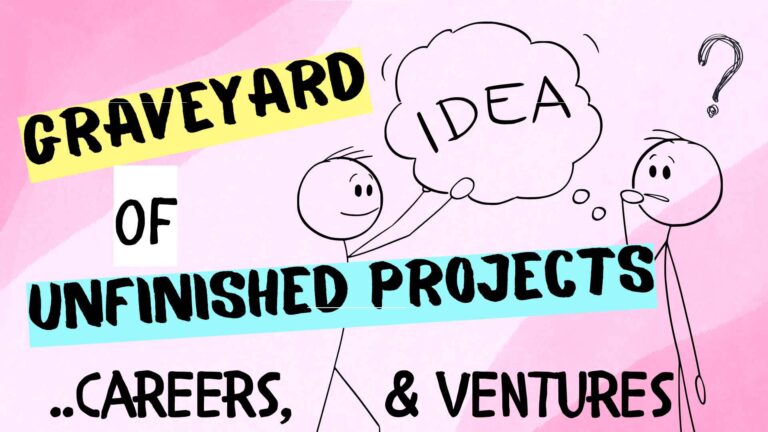You know the drill. One mistake spirals into a full-blown mental takedown. You forget an appointment, miss a deadline, or say something awkward in a conversation—and suddenly, your brain is screaming, “You’re a failure. You’ll never get it right.”
Sound familiar? Welcome to the ADHD negative thought loop. It’s exhausting, relentless, and completely unfair. But here’s the truth: You are not your mistakes. You are not your worst thoughts. And you can break the cycle.
Negative Self-Talk Takes Many Forms
Women and men with ADHD often experience negative thought patterns that can impact their self-esteem and emotional well-being. Ongoing self-doubt can lead them to blaming themselves for their struggles, which can impact their confidence. Some common examples include:
- All-or-Nothing Thinking – Seeing situations in extremes, such as “If I fail at this, I’m a complete failure” instead of recognizing progress and effort.
- “Always” Thinking – Believing that negative experiences will always repeat, like “I always mess things up” or “No one ever understands me”.
- Rumination – Dwelling on past mistakes or worries, replaying them over and over instead of moving forward.
- Negative Self-Talk – Internalizing criticism and thinking “I’m not good enough” or “I’ll never get this right”.
- Catastrophizing – Assuming the worst-case scenario will happen, such as “If I forget this task, everything will fall apart”.
These thought patterns can be challenging, but recognizing them is the first step toward changing them.
Why ADHD Brains Get Stuck in Negative Thought Patterns
ADHD brains are wired for intensity. We feel everything deeply—joy, frustration, excitement, shame. And when we mess up (which, let’s be real, happens often), our brains latch onto the failure like it’s the only thing that defines us.
This happens because:
- Rejection Sensitivity Dysphoria (RSD) makes us hyper-aware of criticism, real or imagined.
- Executive dysfunction leads to forgetfulness, procrastination, and impulsivity—fueling self-blame.
- Emotional dysregulation makes it hard to shake off negative feelings, trapping us in a cycle of self-doubt.
But here’s the thing: Your brain is not your enemy. It’s just running an outdated script. And you? You have the power to rewrite it.
“How to ADHD” on Youtube has a fanstastic list of suggestions from viewers on how to break negative thoughts. One standout: walk through a doorway to get the “threshold” effect – the same idea as losing your thoughts when you pass through a door (a strategy, in this case, that can be helpful instead of annoying!).
How to Break the Cycle
1. Catch the Thought Before It Spirals
The moment you hear that inner voice whispering, “You’re a failure,” pause. Ask yourself:
- Is this thought based on facts or feelings?
- Would I say this to a friend?
- What’s a more balanced way to look at this?
Instead of, “I always mess up,” try, “I made a mistake, but that doesn’t define me.”
2. Challenge the Lies Your Brain Tells You
ADHD brains love all-or-nothing thinking. One bad day? “I’m useless.” Forgot something important? “I’ll never get my life together.”
But reality isn’t black and white. You are not a failure because you forgot one thing. You are not doomed because you procrastinated. Start questioning these extreme thoughts. Ask yourself:
- What evidence do I have that this thought is true?
- What would I say to someone else in my position?
- What’s a more realistic perspective?
3. Interrupt the Pattern with Action
Negative thoughts thrive in inaction. The longer you sit in self-doubt, the stronger it grows. So move. Do something—anything—to shift your focus:
- Go for a walk.
- Text a friend.
- Blast your favorite song.
- Write down three things you did well today.
Even the smallest action can break the cycle.
4. Rewire Your Brain with Self-Compassion
ADHD brains are brutal when it comes to self-criticism. But here’s the truth: You deserve kindness. You are doing your best in a world that wasn’t built for your brain.
Try this:
- When you mess up, talk to yourself like you would a friend.
- Replace self-blame with curiosity. Instead of, “I’m so lazy,” ask, “What made this task hard for me?”
- Celebrate small wins. ADHD brains thrive on positive reinforcement—use it.
Create a DIY Self-Aid Kit
I can’t take the credit for this, instead I will point you to Kate Moryoussef. She talks about moving, EFT tapping, and talking with others and other outside-the-box ideas to beat negative self-talk. Activity is a great way to shake the overwhelm and anxiety out of your system (even combining the EFT tapping with talking to yourself).
I actually mentioned the EFT tapping as a tool to find missing things in Ways to Find Your Stuff Back. There is a lot to unpack with the EFT tapping. It can be used in many ways, including shadow work, anxiety, stress, etc.
You Are More Than Your Worst Thoughts
ADHD doesn’t make you broken. It makes you different—and different is powerful. The world needs minds like yours—minds that think outside the box, that challenge norms, that bring fresh perspectives.
So the next time your brain tries to trap you in negativity, remind yourself: You are not your mistakes. You are not your worst thoughts. You are enough—exactly as you are.
#inthistogether -Renee




